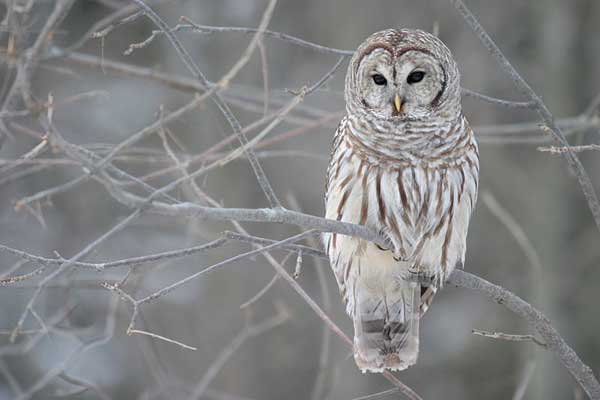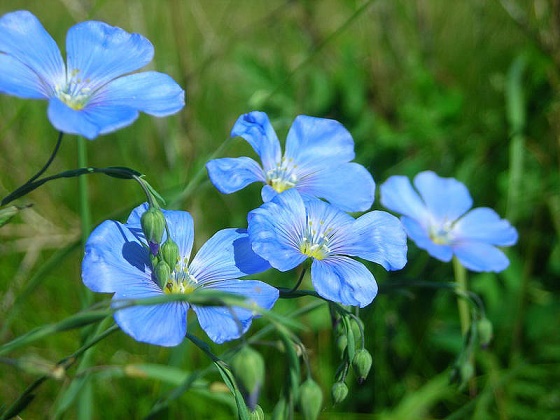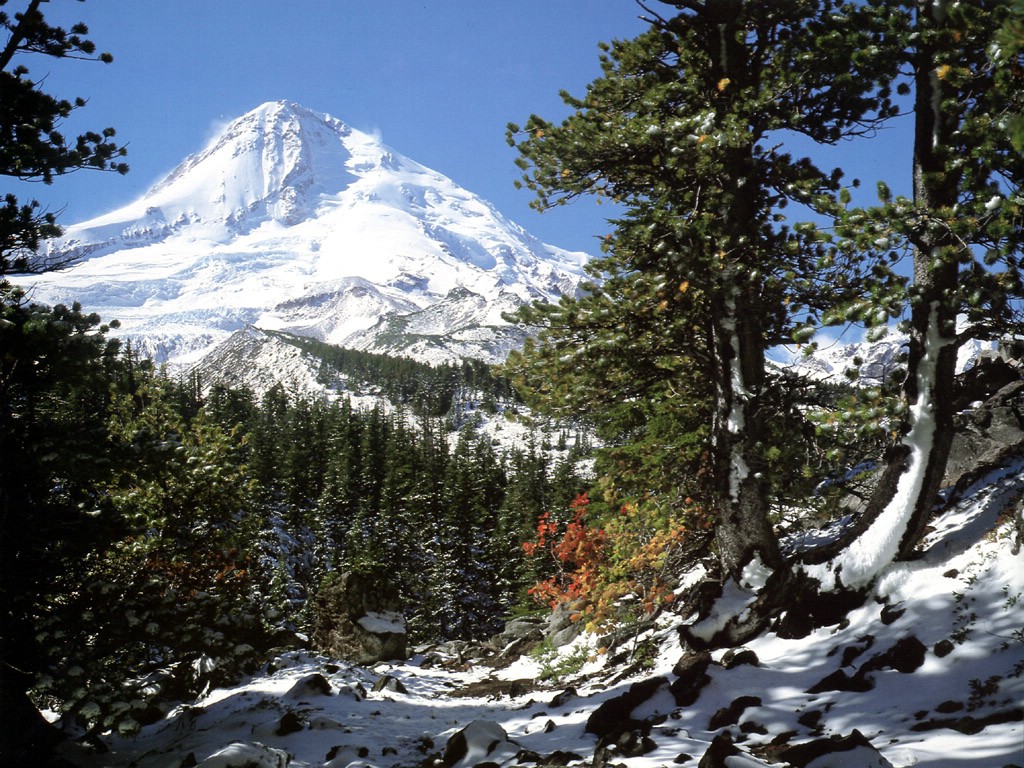

Graha - Bhava - Rashi - Gochara
TRANSIT CALENDAR=
Shani Transits by Rashi 1900-2099-CE
***

-
[Shani in classroom-7] = [dikbala]
-
[Shani in classroom-10] = [svabhava]
-
[Shani in classroom-11] = [svabhava]
-
[Shani-Mesha] = [nīcha]
-
[Shani-Tula] = [uchcha]
-
[Shani-Makara-Draco] = [svakshetra]
-
[Shani-Kumbha] = [svakshetra] + [mulatrikona if within 0-20 deg]

OM sham shanaishcharaye namah
OM shum shukraya namah
OM dram drim draum sah shukraya namah
30.5-year cycles of Shanicarya

Visiting Professor
samchara - gochara
SHANI
ON TOUR
via
Thauli
Vanika - Vanikpatha
Zugos -Yugya
Saturan's 2.3 year transit
through
Libra
Libretis = Zugos = Vesyi = Vahy = Vaga = Balanta
Terazi = Moznaim = al-Miizaan
duration in rashi = 2.3 years = including vakri = retrogrades
frequency of occurrence = once every 30.5 years
Gochara Shani via Tula Effects upon the 12 Bhava
How does Professor Shani behave in transit?
Oct-1923 until Dec-1925
Nov-1952 until Nov-1955
Oct-1982 until Dec-1984
Nov-2011 until Nov-2014
Jan-2041 until Dec-2043
Nov-2070 until Feb-2073
fair contracts
social justice
system-wide equity
legal parity
re-balancing and re-distributing under governance of the rule of law
compare:

In the gracious, equable rashi of Tula, sober and lawful Professor Shani does His best work.
Make no mistake, however: Shani is still Shani and painstakingly slow work is still painstakingly slow work!
Professor Shani activates time, hierarchies, institutions, governments, and orderly systems of all types.
Shani strives to make all features of His environment conform to principle. Shani is a legalist. He imposes Law and Order.
In Tula, the principles which determine Shani's course of action are those of social equity, mutual parity, and structurally balanced design.
Shri Stern Shani Vanika's beneficial effects manifest on a social, legal, institutional scale.
Professor Shani's teaching regime imposes legal [Tula] judgments upon unfair situations. Shani-Tula gives excellent results for matters of fair contracts and social justice throughout the social world.
Shani-Tula institutes the slow but inexorable organizational requirement to re-balance the large-scale judicial and participatory resource-equity social systems.
In short, the correct expectation for all matters of institutional, legal, and hierarchical organization = justice will be served.
If leaders lose their leadership positions during Shani's transit via Tula, the system over which those leaders have been presiding has become unfair, and Shani is enforcing the rule of law toward balance, equity, franchise, and due process.
Tula-Shani's benevolence include legal enforcement of fair agreements in contracts, structuring of large social equalization programs, and overall adherence to the principles social justice in a departments of social conduct.
On an interpersonal scale, one for whom Thula is a subha-bhava will find that Shani's cautious, slow-moving (or anti-moving) behavior allows the person and their peers [Tula] to slow down and concentrate their efforts on long-term mutual interests.
The marriage contract and the employment contract are obvious recipients of Shani's responsible, dignified, and elderly influence. Additionally, consider social-legal contracts, agreements, and alliances.
For example according to modern political philosophy (Rousseau) each individual citizen holds a contract with one's government, called the social contract . Under Tula-Shani's gochara influence, the social contract between each citizen and the State = likely to come under judgment.
In particular, shortcomings in fairness or inequitable distribution of power within the citizenry can be expected to become topics of legal inquiry and rectification. For example, unfair political elections for government office come under legal inspection.
The great thing about Tula-Shani = He will ultimately, before the end of this transit, impose remediation and rectification.
Slowly but inexorably, on a systematic and durable basis, Zani-Tula imposes Justice.

Lake Superior, Upper Peninsula of Michigan, USA
Samchara Shani via Tula
Samchara Shani temporarily occupies His uttamamsha tulā
Via Vanika, samchara Shri Shani temporarily acquires [Yogakaraka] status
Naturally, if the transit of Shani via Tula rashi occurs simultaneously with an important Vimshottari Dasha bhukti of Shani, particularly Shani-Shani svabhukti = then the demands of limitation, discipline, austerity, elegance, maturity, sobriety, and social responsibility are further imposed.
- Although Shani's effects can be recognized during His entire journey via all 30 degrees of each rashi, the most tangible results of His influence are often noticed when He contacts an important lagna

-
[Shani-Mesha] = [nīcha]
-
[Shani-Tula] = [uchcha]
-
[Shani-Kumbha] mulatrikona 0-20

Iceland blue-ice northern beach
-
If Tula = bhava-1 as measured from Tulā indriya-lagna or measured from Tula-Chandra = The earthen body size may contract due to restriction of the flow of kinetic energy. One's attribute-cluster personality may temporarily embody the Shani-sponsored virtues of maturity, sobriety, austerity, and patience. Social personality = pressured into accepting heavier workload + responsibilities. Vanika obligations = negotiation, advising, representation, diplomacy, alliance-formation. time schedules for personal movement may be more rigorous with weightier consequences. Narrowed scope of operations for graha-in-1. Sporting competitions, individual championship, unique appearance may be discouraged. The bhava ruled by graha-in-Tula = temporarily slowed by scarcity, rigidity, age, fear of consequences, cold, dark, or dryness. ++++ if Shani's transit via bhava-1 also contacts Tula-Chandra -1, then in addition to the general effects of Shani's slowing, drying, seizing, restricting of the mineral-body, there may be also a freezing of the flow of emotional nourishment during Sade-Saati. Shani's Parashari-drishti upon both 3 ++ 3rd-from-Chandra may produce temporary mental depression (3). Shukra lagnesha is a close friend of Shani. Therefore, despite its exhausting dryness, this Shani Tour = reasonably fair and balanced.
-
If Tula = bhava-2 as measured from Kanya indriya-lagna or measured from Kanya-Chandra = Shani may desiccate the sustaining foods (2, pantry). Stored foodstuffs may be drier or preserved (such as via salt or other chemicals). Shani prefers more cautious speech , telling of hoary stories, singing the old traditional songs, reciting the approved histories. He cherishes frozen hoards of worthy objects. Compression of teeth-tongue (2) due to fear of telling the truth. Corrective dental work = slow but steady. It may be hard to speak the agreed Thula truths which describe completed bargains, fixed judgments, legalized arrangements. Fearful of nonconformity, the family of origin may be punitive or harshly judgmental. The family may temporarily withhold validation (validity, 2). Culling of the animal herds, naarrowed lineage knowledge, shrinking of historical consciousness, blocked language fluency. Depreciation of contained, warehoused, cooped, banked values. Compressed output of graha-in-2. Financial accounts, precious collections, libraries and databases = access delayed. The bhava ruled by graha-in-Tula are also compressed temporarily by conditions of scarcity, rigidity, age, fear of consequences, cold, dark, or desiccation. Busy Budha lagnesha = a close friend of Shani. Therefore, this Shani Tour= hardworking ++ steadily busy.
-
If Tula = bhava-3 = as measured from Simha indriya-lagna or measured from Simha-Chandra = reduced frequency of communication events. Fewer business transactions, explanations, descriptions, diagrams, trainings, teamwork. Pressure to publish. Manufacturing delay. Reduces the scope of evangelism, propaganda, writing, radio-television-internet. Announcements must adopt a more plebeian vocabulary emphasizing justice-for-all by rule of law [Tula]. Narrows the range of the target audience. Institutionalizes and bureaucratizes administrative process. Temporarily diminished frequency of short-term travel, tours, conference attendance, seminars, short courses. Or, attending these meetings becomes more laborious, dutiful, colder, frustrating, discouraging. Instructions = legalistic, pragmatic, cautious, structured, or socially responsible. Ordinarily, shani is quite comfortable in a svabhava of specific, instructional, tool-using Budha the Messenger-Merchant. Messages must demonstrate a practical usefulness measured by their direct application to mental or manual tasks. The scope of action of graha-in-3 is pinched. Entrepreneurial commerce, ensemble collaboration, programming may be hampered. The bhava ruled by graha-in-Tula are also limited temporarily by conditions of scarcity, rigidity, age, fear of consequences, cold, dark, or desiccation. Sparkling Surya lagnesha is a bitter enemy of class-conscious Shani. During this Shani Tour, the Systems Master = especially hostile to personal entitlements and individual exceptions. Nevertheless, shani Yogakaraka connotes dignity.
-
If Tula = bhava-4 as measured from Karkata indriya-lagna or measured from Karkata-Chandra lagna = gochara Shani slowdown drishti into 6-10-1 = Due to gochara Sauran's cold, stiffening, stony drishti upon tanu-bhava-1, the mineral-body can age visibly during these 2.3 years. Delays and restrictions in the established rhythms of home life. Obligatory duty to spend more time at home. Shrinks the boundaries or hampered movement in locality. Mandatory stabilization. Shelter-in-place policies. Locally enforced [Karkata] property fencing . Dryness or rockiness of farmlands. Climate potential for drought, ice, cold wind. Perimeter patrol-and-policing = legally imposed. Schools of all kinds may experience increased government restrictions on individual freedoms. Emphasis on classroom conformity + equity [Tula]. Transportation systems may be slower. Stricter consequences for non-conforming land-use, especially on shared midways [Tula]. Burdensome environmentalism. Negotiations may occur in one's home, Yet, be suppressed unless they can be framed within the established local code of conduct. Stricter building inspections for new construction. Compressed output of graha-in-4. Local infrastructure, building, shipping, vehicles, roadways may get delayed maintenance. The bhava ruled by graha-in-Tula = temporarily slowed by scarcity, rigidity, age, fear of consequences, cold, dark, or desiccation.
-
If Tula = [bhava-5] as measured from Mithuna indriya-lagna or measured from Mithuna-Chandra lagna = Restricted expression of individual creativity. Constrains the range of permitted artistic performance. Cooling of theatrical genius, glittering fashion, political display. Structures imposed by social policy tends to limit personal entitlements . Uniform standards impressed upon the brilliance of children, including students. More pressure to use standardized testing + less tolerance for individualized learning styles. Conceptions = reduced. Fewer children born. Burden of raising children = heavier. Kids may undergo more regimentation. Poets and literary artists may experience resistance to fame. Politicians may be pressured by the government away from flamboyant campaigning and celebrity sparkle. Speculative finance cramped by legalities. Compressed output of graha-in-5. Elections, entertainments, prizes, and games may be onerous or delayed. The bhava ruled by graha-in-Tula are also limited temporarily by conditions of scarcity, rigidity, age, fear of consequences, cold, dark, or desiccation. Busy Budha lagnesha = a close friend of Shani. Therefore, this Shani Tour= hardworking ++ consistently busy.
-
If Tula = [bhava-6] as measured from Urisha indriya-lagna or measured from Urisha-Chandra lagna = generally a beneficial transit = the scope of kapha imbalance may diminish because Shani-via-6 slows disease. Chronic conditions may entrench. Shani hampers the production of toxins. He temporarily limits options for self-medication. The volume of accusations, disputes, treachery, broken promises or unsatisfied contracts may decrease. Strictly pragmatic, legalistic, lowest-common-denominator attitude toward matters of litigation, medication, altercation. Unsympathetic Shani curtails the effect of patients reciting the liturgy of the victim. Shri Sauran is no respecter of individuality. He sees problems on a sociological scale. The durokaraka demands endurance. He does not entertain individualized complaints. Professor Sauran is welcome in svabhava of argumentative, detail-fixated Budha. Ailments of sugar, alcohol, kidney-pancreas [Shukra] can be successfully treated with cold, dark, stiff, old, stony remedies. Complaints of servants, employees. Human-resources workload. Compressed output of graha-in-6. Medical treatment, litigation, divorce, criminalization / crime, provision of aid may be onerous or delayed. The bhava ruled by graha-in-Tula are also discouraged by conditions of scarcity, rigidity, age, fear of consequences, cold, dark, or desiccation. Sharing Shukra lagnesha = a close friend of Shani. Therefore, despite its exhausting dryness, this Shani Tour = reasonably fair and balanced.
-
If Tula = bhava-7 as measured from Mesha indriya-lagna or measured from Mesha-Chandra = Shani gets temporary dikbala during 2.3 years. Strict Shani imposes contractual obligations upon relationships both business and personal. Professor Shani's zero-exception legal judgments = welcomed in svabhava of balance-seeking, contractual Shukra. Conventionally conservative advisors + cautious consultation + a preference for existing partnerships rather than new ones. Social pressure to complete brokerage, match-making, betrothal. Partners demand adherence to terms of agreement. Due to gochara Saruran's cold, stiffening, stony drishti upon tanu-bhava-1, the mineral-body can age visibly during these 2.3 years. Only the most socially approved types of alliance are supported. Legitimated unions benefit from maintaining the time-honored division of labor. Compressed output of graha-in-7. Vows, trusts and treaties, marriages, promises may be onerous or delayed. The bhava ruled by graha-in-Tula are also limited temporarily by conditions of scarcity, rigidity, age, fear of consequences, cold, dark, or desiccation. Kuja lagnesha is an intimidating shatru-graha of Shani. Yet Shani-7 obtains [dikbala]. Therefore, this Shani Tour is often unyielding in the enforcement of contracts.
-
If Tula = bhava-8 as measured from Meena indriya-lagna or measured from Meena-Chandra = Shani feels threatened in Kuja's svabhava-8. Kuja is a warrior who fights to the death, but Shani's shield must resist Kuja's sword. During His visit to randhrasthāna, shani delays dematerialization. Temporary suppression of occult openings. Slowed eruption of unexpected force. Arrests revolutionary insurgence. Common-sense materialism denies the reality of unseen forces. Oppressive emergency measures. Shrunken sphincters. Closes the portal of revelation. Repression of cyclical renewal. Reluctance or refusal to respond to events perceived as frightening. Frozen in fear. Shani seals the lid which hides the secret cache. Shani camouflages the gateway to forbidden power. Few initiation ceremonies. Those which occur would be minimal. Undisclosed vows (8). Stony Shani obscures the secret boiling magma underlying the telluric crust which causes the continents and their surface civilizations to rise into mountains or fall into the sea. Stops harsh trauma or blunts the shock. Shani paralyzes the tectonic pressure-release mechanisms. Hampers discovery of power from heat-source. Impedes the transformative potency. Delayed healing. Blocks access to geothermal power. Dims insight into condition of rebirth. May lawfully delay inheritance from the estate of the parents (5th-from-4th). Compressed output of graha-in-8. Disaster response, recovery operations, exploratory surgeries, emergent new identities may be deprioritized. Bhava ruled by graha-in-Tula are also limited temporarily by conditions of scarcity, rigidity, age, fear of consequences, cold, dark, or dryness.
-
If Tula = [bhava-9] as measured from Kumbha indriya-lagna or measured from Kumbha-Chandra = Shani focuses upon orthodoxy while He limits the scope of higher philosophical wisdom. Tula = a field of principled balance. Wise patriarchs of Tula-9 can spread the understanding of social justice. Grumpy old Shani tends to constrain the expansive spirit of humanism, reducing inspiration to a stiff dogma. Cautious behavior of professors, priests, proselytes, presbyters, preachers, kohen, kahuna, popes, pater-nostra, privileged patricians. Strictures of institutionalized patronage. In Tula, respectful negotiation is supported ,despite Shani's fixation on scriptural law. Father-figures tend to withhold praise. Sacred priesthood must justify proletarian policies. Bhava-9 = a neutral location for Professor Shani. His 9-transit often indicates a sustained period of higher studies. For scholars, limitation by rigid theories or cramped fundamentalist interpretations. Populist preachers are benefitted. Compressed output of graha-in-9. Fatherhood, indoctrination, obtainment of university doctorate or high-priesthood may be onerous or delayed. The bhava ruled by graha-in-Tula are also discouraged by conditions of scarcity, rigidity, age, fear of consequences, cold, dark, or desiccation. Because Shani = lagnesha, this transit is justly responsible , reinforcing seniority.
-
If Tula = [bhava-10] as measured from Makara indriya-lagna or measured from Makara-Chandra
[svabhava] of Shani benefits from austerity, order, discipline = Professional leadership necessary but burdensome. In Tula, respect for a fair-dealing, diplomat-leader. Social reputation may dwindle due to restricted venues for public display of capabilities. Less dramatic visibility, fewer changes of career, Yet, h eavier decision-making responsibility. Uncelebrated effort invested now will sustain and support the career continuing into the next transit when Shani moves into 11. Sober professional recognition at the peak of the social pyramid. Even if the Learner does not normally fill a leadership role, social ordering duties may be imposed. Bureaucratic officials in public institutions must follow strict protocols. In Tula, favorable for the figurehead who can combine conciliatory deal-making with the fixed rules of the hierarchy. Compressed output of graha-in-10. Step-wise promotion, official investiture, command-post may be frugally accomplished without ceremony. The bhava ruled by graha-in-Tula are also limited temporarily by conditions of scarcity, rigidity, age, fear of consequences, cold, dark, or desiccation. Because Shani = lagnesha, this Shani-Tour = effective and honored, albeit demanding.
-
If Tula = [bhava-11] as measured from Dhanus indriya-agna or measured from Dhanus-Chandra
[svabhava] of Shani benefits from austerity, order, discipline = drishti to lagna = earnings pressure = Friendship network remains reliable but it does not expand. Pinching economic legalities. Temporary plateau in profit. Gains from frugal products that cater to the lowest common denominator. Emphasis on equity [Tula] within the marketplace gridwork. Slow but steady, hardworking Shani-11 follows the rules. He rarely has big losses. Existing linkages reinforced between older friends, older collectives, regular communities, but new links are few. Limits the flow of income.. Obligatory assemblies. Attendance at mass gatherings may be required. Compressed output of graha-in-11. Revenues, profits, earnings, achievements may be onerous or delayed. The bhava ruled by graha-in-Tula are also limited temporarily by conditions of scarcity, rigidity, age, fear of consequences, cold, dark, or desiccation.
-
If Tula = [bhava-12] as measured from Vṛścika indriya-lagna or measured from Vṛścika-Chandra = hampers the volume and frequency of spiritual shepherding. Fewer dreams. Night visions may contain less profound wisdom -- albeit perhaps more pragmatic guidance. Reduced travel to distant lands. Fewer invisible spaces welcome the meditator. Yet, an established contemplative practice may benefit from formal discipline. Less secluded artistic studio time available for reflective, imaginative, or visionary work. Fewer new research opportunities in the walled laboratories. Yet, regulatory compliance improves for existing work.. Workload may impose isolation. Hampered intuition and insight. Less prayer, less sleep , less reflection. Thula requires lawful advocacy from the watching ancestors. More common-sense rules in the bedroom, the hospital room, the meditation cell. Tula-Shani justifies the deprivations. Compressed output of graha-in-12. Privacy, astral perception, restful sanctuary may be less available, or heavier workload to maintain them. The bhava ruled by graha-in-Tula are also limited temporarily by conditions of scarcity, rigidity, age, fear of consequences, cold, dark, or desiccation.

Northeast flank of Wy'east (Mount Hood) in Oregon, USA (looking west toward Pacific Ocean)


[How Readings Work] = [Sample Sacred Jewels Ratna Recommendation] = [Seva]

file update = 06-Jan-2026
[Copyright © 1994-2024 by Barbara Pijan Lama] = [Contact] = [How to Request a Jyotishavidya Reading]
Barbara Pijan Lama Jyotishavidya Vedic Astrology Surya Sun Chandra Moon Mangala Mars Budha Mercury Guru Jupiter Shukra Venus Shani Saturn Rahu Ketu Graha Planets Dasha Timeline Calendar Nakshatra Navamsha Marriage Children Treasury Career Spiritual Wisdom Cycles of re-Death and re-Birth
The information on barbarapijan.com , including all readings and reports, is provided for educational purposes only. Wishing you every happiness and continuing success in studies!
